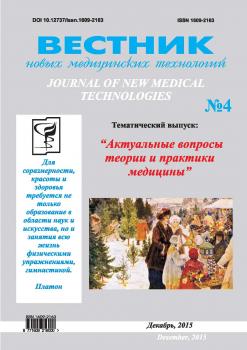Method of neurocomputing is extensively used in biomedical systems, but this method has one defect which is now disregarded: the resulting ranking diagnostic signs cannot be used at a few iterations p, i.e. network adjustment. Based on the study of the differences between the three age groups of women Khanty (the indigenous population of Yugra) on the parameters of the five active component (from all 14 registered) state of the cardio-respiratory system of the body, the authors demonstrate the fallacy of a single or small number of iterations R (R≤50) solving the problem of binary classification separate groups in a special five-dimensional phase space.The solving binary classification problem must be repeated not less than 1000 times that provides identifying significant diagnostic signs хi i.e. exhibits the significance in diagnostics of ageing rate. This will guarantee that the exact value of the weights Wi signs up to three digits after the decimal point. This ensures accurate diagnostics significance xi features not only in gerontology, but also in any other areas of medicine and physiology. The task of system synthesis is solved if statistics are powerless to identify differences between groups of patients or in different physiological conditions.
neuroemulator, cardiovascular system, binary classification.
1. Anokhin P.K. Kibernetika funktsional´nykh sis-tem. M., Meditsina, 1998. 285 s.
2. Gavrilenko T. V., Es´kov V. M., Khadartsev A. A., Khimikova O.I., Sokolova A.A. Novye metody dlya gernotologii v prognozakh dolgozhitel´stva korennogo naseleniya Yugry. Uspekhi gerontologii. 2014. T. 27. № 1. S. 30-36.
3. Es´kov V.M., Zhivoglyad R.N., Khadartsev A.A., Chan-turiya S.M., Shipilova T.N. Identifikatsiya parametrov poryadka pri zhenskikh patologiyakh v aspekte sistemnogo sinteza. Sistemnyy analiz i upravlenie v biomeditsinskikh sistemakh. 2006. T.5. №3. S. 630-633.
4. Es´kov V.M., Filatova O.E., Fudin N.A., Khadartsev A.A. Problema vybora optimal´nykh matematicheskikh modeley v teorii identifikatsii biologicheskikh dinamicheskikh sistem. Sistemnyy analiz i upravlenie v biomeditsinskikh sistemakh. 2004. T. 3. № 2. C. 150-152.
5. Es´kov V.M., Zilov V.G., Grigor´ev A.I., Khadar-tsev A.A. Novye podkhody v teoreticheskoy biologii i meditsine na baze teorii khaosa i sinergetiki. Sistemnyy analiz i upravlenie v biomeditsinskikh sistemakh. 2006. T.5. №3. S. 617-622.
6. Es´kov V.M., Karpin V.A., Filatov M.A., Filatova O.E. Filosofskie osnovaniya teorii patologii: problema prichinnosti v meditsine. Filosofiya nauki. 2012. №1(52). S.118-128.
7. Es´kov V.M., Popov Yu.M., Filatova O.E. Tret´ya paradigma i predstavleniya I.R. Prigozhina i G. Khakena o slozhnosti i osobykh svoystvakh biosistem. Vestnik novykh meditsinskikh tekhnologiy. 2012. T. 18. № 2. S. 416-418.
8. Es´kov V.M., Khadartsev A.A., Filatova O.E., Khadartseva K.A. Okolosutochnye ritmy pokazateley kardiorespiratornoy sistemy i biologicheskogo vozrasta cheloveka. Terapevt. 2012. №8. S. 36-43.
9. Khadartsev A.A., Yashin A.A., Es´kov V.M., Agarkov N.M., Kobrinskiy B.A., Frolov M.V., Chukhraev A.M., Gondarev S.N., Khromushin V.A., Kamenev L.I., Valentinov B.G., Agarkova D.I. Informatsionnye tekhnologii v meditsine. Monografiya. Tula: TulGU, 2006. 272 s.
10. Eskov V.M., Eskov V.V., Filatova O.E. Characteristic features of measurements and modeling for biosystems in phase spaces of states. Measurement Techniques. 2011. V. 53(12). R. 1404-1410.
11. Eskov V.M., Gavrilenko T.V., Kozlova V.V., Fila-tov M.A. Measurement of the dynamic parameters of micro-chaos in the behavior of living biosystems. Measurement Techniques. 2012. V. 55. №. 9. P. 1096-1101.
12. Eskov V.M, Eskov V.V., Filatova O.E., Filatov M.A. Two types of systems and three types of paradigms in systems philosophy and system science. Journal of Biomedical Science and Engineering. 2012. Vol. 5. №. 10. P. 602-607.
13. Eskov V.M. Evolution of the emergent properties of three types of societies: The basic law of human development. E:CO 2014 16(2): XX-XX. p. 109-117.





